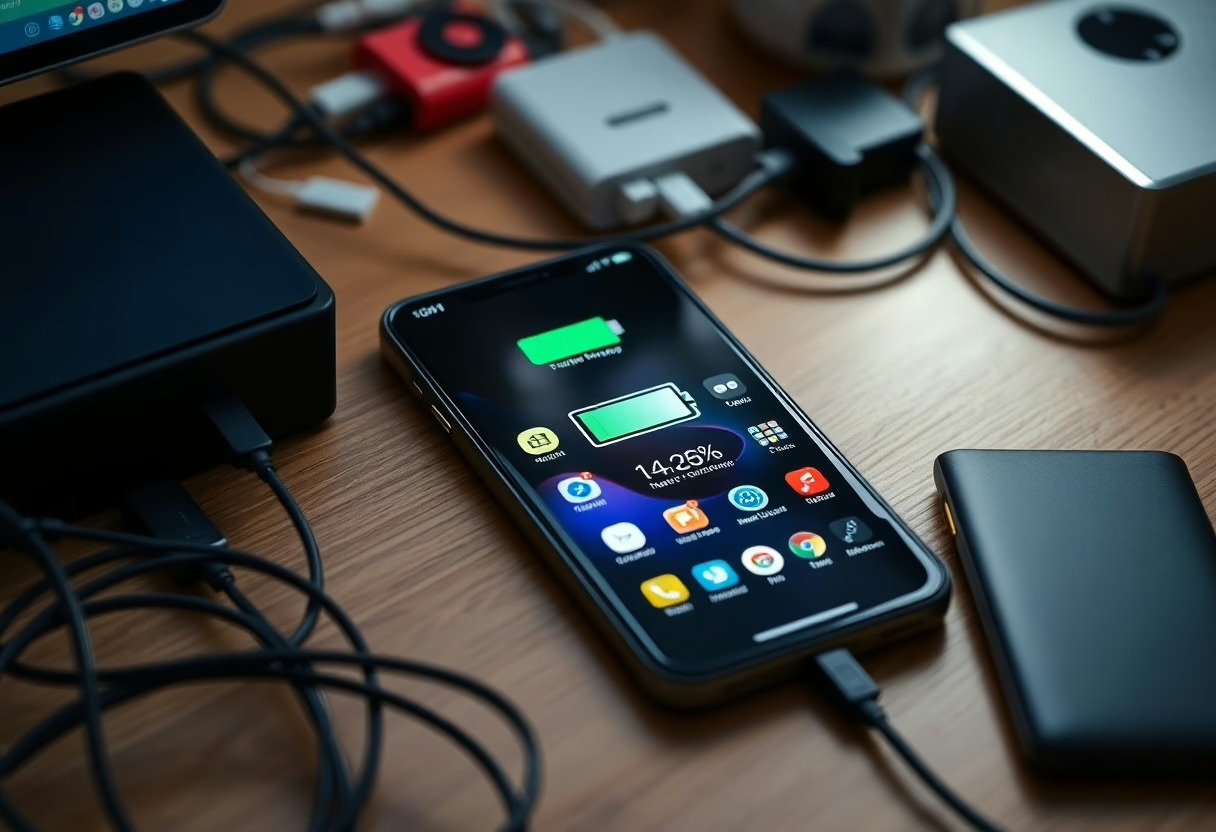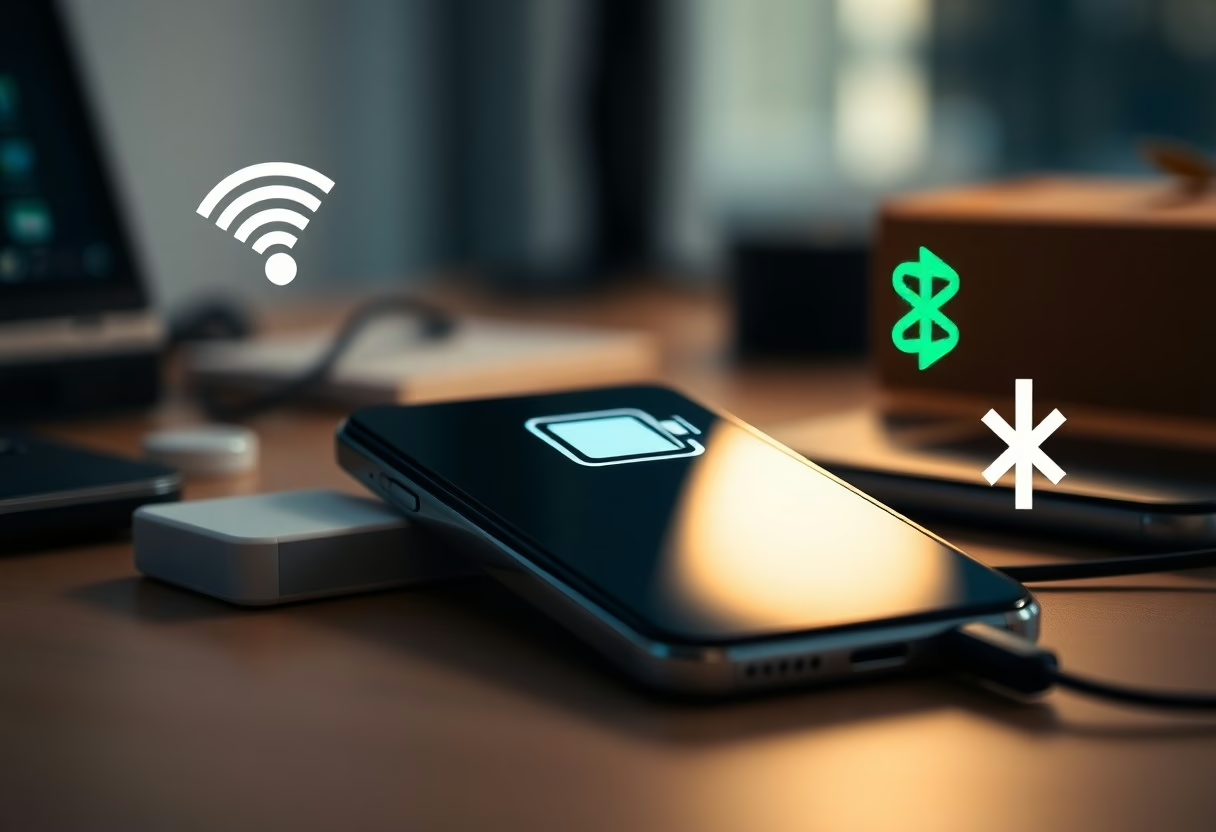Over time, you may have noticed that your phone’s battery drains faster than it used to. This can be frustrating, especially when you rely on your device throughout the day. Understanding the factors that contribute to this problem is key to prolonging your battery life. In this post, we’ll explore common culprits that could be sucking the life out of your battery and provide solutions to help you optimize your device’s performance.
Hidden Apps and Background Activity
While you may think your battery woes stem from the usual suspects like a bright screen or heavy usage, many apps are stealthily sapping your power. These unseen bandits operate in the background, often without your knowledge, leading to significant energy drain. Many apps run background activities that keep them updated and responsive, yet this constant refresh can be a silent killer of your battery life. Moreover, apps using location services can nearly double this drain, as GPS continually seeks your location. Assessing which apps require location access and changing these settings can greatly enhance battery efficiency. Features that enhance your experience can be double-edged swords. High-resolution displays, constant data syncing, and push notifications are all designed to keep your device efficient, but they require power. When you enable features like live wallpapers, automatic updates, and resource-hungry games, your battery’s lifespan shrinks significantly. Apps that utilize augmented reality (AR) or graphics-heavy games require substantial processing power, leading to faster battery drain. Social media applications that refresh frequently in the background also add to this burden. You can mitigate this by limiting background app activity and turning off unnecessary notifications to ultimately preserve your phone’s battery health.

Screen Usage and Display Settings
Your phone’s screen is one of the biggest culprits behind battery drain. Prolonged usage can siphon off significant energy, yet many users are unaware of just how much their screen time contributes to quick battery depletion. From scrolling social media to binge-watching videos, every tap and swipe demands power. High brightness settings and elevated screen resolutions intensify battery usage. If you notice your display is brighter than necessary, consider adjusting it to a comfortable level. Lowering the resolution can also help, especially for non-intensive tasks. Utilizing adaptive brightness can automatically optimize settings based on your environment, preserving battery life without sacrificing user experience. Your everyday activities on your phone vary in their energy demands. Identifying which apps and tasks are essential versus non-essential can help you manage screen time more effectively. Services like streaming, gaming, or using augmented reality can strain your battery; conversely, checking emails or browsing the web generally requires less energy. Prioritizing essential usage over non-essential tasks can optimize your phone’s battery life. For instance, if you find yourself frequently scrolling through social media during free moments, consider setting specific time limits or establishing dedicated “downtime.” By minimizing unnecessary usage, you can conserve energy for tasks that matter most.
Connectivity and Network Issues
Constant connectivity undoubtedly comes with its advantages, but it also significantly impacts your phone’s battery life. Whether you’re streaming videos, participating in video calls, or syncing data across apps, your smartphone is tirelessly working to keep you connected. Your choice of connectivity plays a vital role in battery consumption. Wi-Fi typically consumes less power than mobile data, yet running Bluetooth and keeping it constantly on for devices like smartwatches or headphones can quickly deplete your battery. If both Wi-Fi and mobile data are enabled, your phone actively switches between the two, which adds further strain. Many apps on your phone sync data in the background, which can be a silent battery killer. Frequent updates for email, social media notifications, or cloud services keep your device engaged with the network and drain battery resources. Multiple apps operating simultaneously can lead to diminished battery life, especially if you’re subscribed to various services that check for updates consistently. Adjusting your syncing settings or temporarily disabling background app refresh can enhance your phone’s efficiency and help you get the most out of its battery capacity. Choosing the most efficient connectivity option when using your phone can help extend its lifespan throughout the day.
Software and Battery Maintenance
Neglecting software updates can sneak up on you, leading to unexpected battery drains. Each new version of an operating system generally optimizes power management and fixes bugs that could contribute to excessive battery usage. By not updating, you miss out on these improvements, leaving your phone running less efficiently. Keeping your software up to date is essential for maintaining optimal battery life. Updates not only enhance the performance of applications, but they also include vital security patches and battery management improvements that can prevent your device from expending unnecessary power. However, older devices may struggle to cope with the latest software advancements. Even if you install updates, the underlying hardware may not support the demanding features, resulting in increased battery drain as your device works harder to keep up. Keeping tabs on your battery health is imperative for optimal performance. Many smartphones offer built-in tools to check battery health, providing insights into your battery’s maximum capacity compared to when it was new. Look for warning signs like frequent shutdowns, unusually long charging times, or overheating during use.
To maximize your battery’s lifespan, adopt simple habits like regularly updating software, limiting background app activity, and reducing screen brightness. Using battery saver modes during critical times and disabling unnecessary connectivity features like Bluetooth and GPS when not in use can preserve energy. Setting your phone to update apps only while charging can prevent battery depletion from unnecessary background activity.
Conclusion
If you’re finding that your battery is draining quickly, it’s vital to evaluate the apps and settings you use regularly. Background applications, high screen brightness, and location services can significantly impact battery life. By managing these factors and utilizing power-saving modes, you can extend the lifespan of your phone’s battery. Staying informed about your usage patterns allows you to make adjustments that keep your device running efficiently. Taking simple steps can make a noticeable difference in preserving your battery life.


